Chord Mojo 2 review: extraordinarily accomplished

People for whom hi-fi is a deadly serious business know exactly what Chord Electronics is. And for those people, the idea of ‘desktop audio’ only really became legitimised when Chord Electronics launched its original Mojo portable DAC/headphone amplifier back in 2015.
At the time, Chord rather optimistically suggested Mojo (short for ‘mobile joy’ – because one of things we can confidently rely on from Chord is challenging model names) was the ideal portable device for improving your smartphone audio experience. In practice, it was too big and too heavy to be a realistic companion to a smartphone – but when introduced to your computer and headphones, Mojo was able to transform your desktop listening experience. Almost single-handedly, Chord turned the humble laptop into a high-quality source of audio enjoyment.
Fast-forward a mere seven years and Chord has delivered this, the Mojo 2. There have been changes, both inside and out, to the original – but the market for products like this has grown arms and legs while Chord has been tinkering. And new ground can only be broken once – so can Mojo 2 possibly have the same sort of impact as the product it replaces?
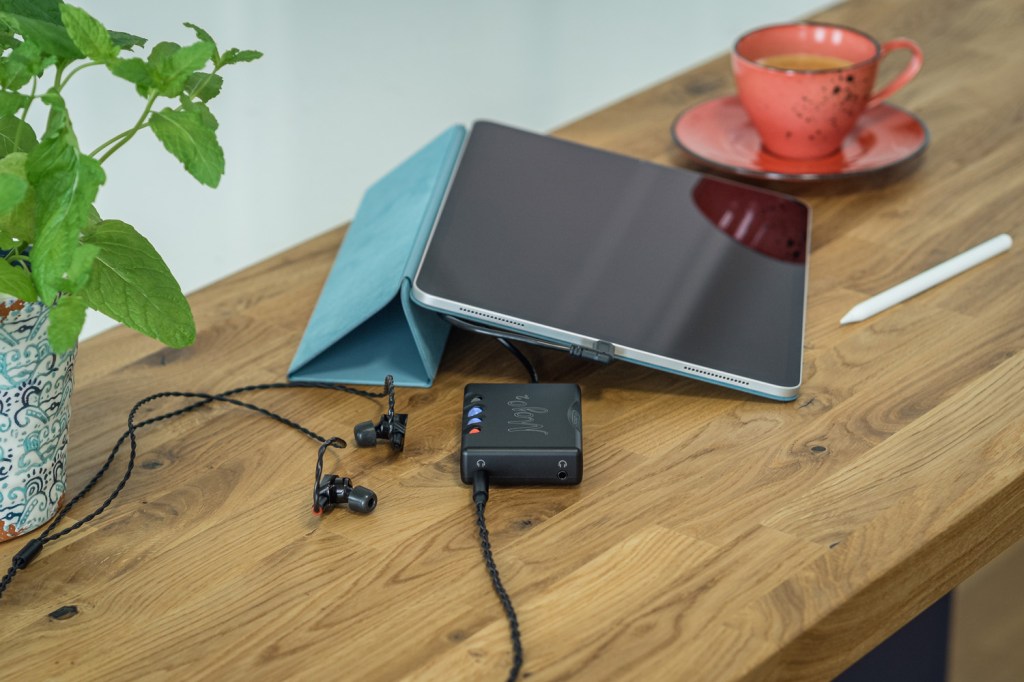
Design and build: big and heavy by ‘small and light’ standards
It’s not easy for an electronics company to have a unique aesthetic – and where products as small as Mojo 2 are concerned (23 x 83 x 62mm, hwd) it’s arguably not even a good idea. Simplicity is usually key where portable electronics are concerned, but whether or not you’re a fan of Chord’s long-established design language there’s no mistaking Mojo 2 for the work of any other brand.
At 185g it’s a dense little thing, and despite the mild rounding off of each corner, it could still do considerable damage if hurled hard enough. As is Chord’s wont, there are no control ‘buttons’ as you might understand it – rather there are a series of ‘control spheres’ that can illuminate in quite a variety of colours depending on what Mojo 2 is up to.
Consider those dimensions and that weight (which are both pretty much unchanged from the original Mojo) and it’s apparent that Mojo 2 evades true portability. Oh sure, of course you can pick it up and carry it about – but it needs to be hard-wired to your smartphone and to your headphones, and we think it’s a bit chunky to do so without ruining the pocket of your jacket. You, of course, might feel differently…

Features: got my mojo (2) working
On the outside, not much has changed. There’s now a fourth control sphere along the Mojo 2’s top edge – it’s a ‘menu’ control and it joins ‘power on/off’, ‘plus’ and ‘minus’ to complete the suite of physical controls. And there’s now a USB-C data input port at the ‘connections’ end of the chassis, along with microUSB inputs (one for data, one for charging the battery), a 3.5mm coaxial input and a Toslink digital optical input.
The addition of a USB-C connection is very welcome, even if it does look a bit like it was welded to the chassis at the last moment. Eventually, (we hope) Chord will get around to ditching the remedial microUSB connection for battery-charging – at least Mojo 2 comes complete with a very short USB-A – to – microUSB cable, because most households stopped using that particular connection around the time the original Mojo launched.
At the opposite end of the casework are a couple of balanced 3.5mm headphone outputs. They can be used simultaneously, but not independently of each other. So if you like to share the listening, go right ahead.
On the inside, there’s similarly been a rethink rather than a remodelling. The most significant change is probably the lossless DSP (digital signal processing) that allows – according to Chord – comprehensive tone adjustments across the entire frequency range with no degradation of sound quality. The changes to battery behaviour – quicker, cooler charging and a near-10% increase in capacity – are very welcome too. The Mojo 2 should consequently be good for the thick end of eight hours of playback before it needs any attention from the mains.
Elsewhere, Chord’s usual conviction that its products are the highest-performing examples of their type currently available is accompanied by Chord’s inimitable flurry of impenetrable terminology and abbreviations. We’re able to distil this down to these (simplified) assertions: Mojo 2 has been specified to be compatible with any file type, of any complexity, and to offer the most precise, most neutral, most detail-packed performance of any comparable product at anything like the price. Which is, we can all agree, a laudable ambition.
It’s also good to know that Mojo 2 is compatible with Chord’s ‘Poly’ streaming module, as the original Mojo was. So for extra outlay, it’s possible to add significantly to Mojo 2’s functionality. But that’s a review for another day…
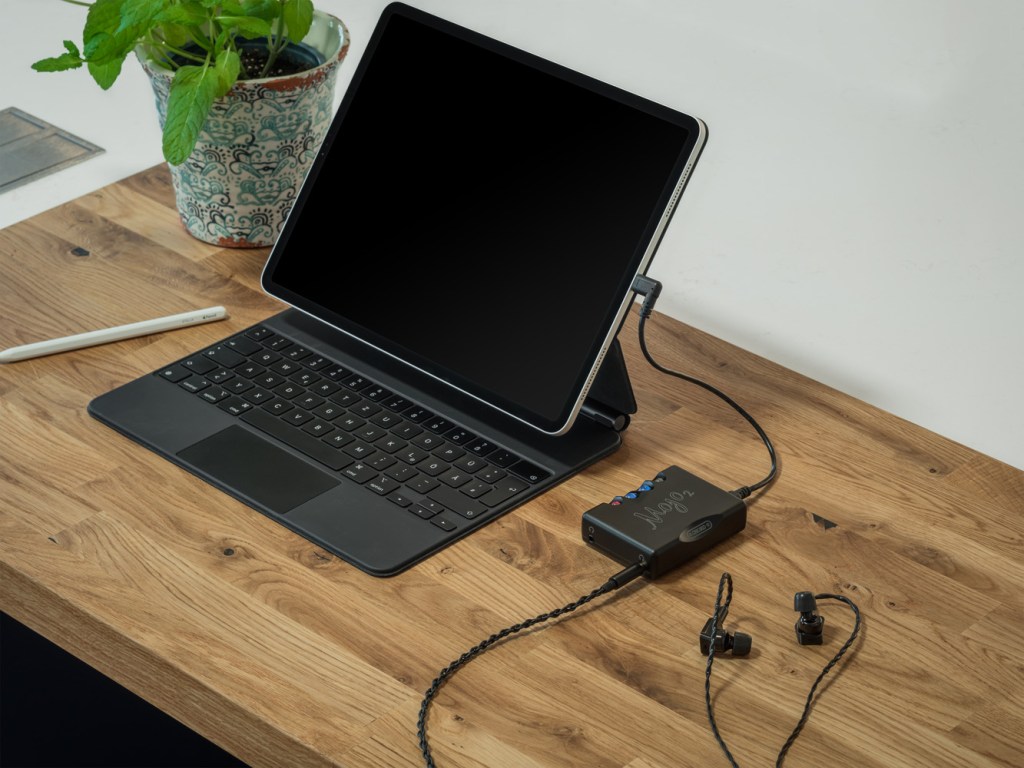
Interface: the music of the spheres
Up until now, we’ve made mild but definite reference to just how individualistic a company Chord Electronics is capable of being. When discussing the user interface of the Mojo 2, though, the concern is that ‘individualistic’ is too weak a word.
As we mentioned, the Mojo 2 has four control spheres. One of these turns the unit on and off, so that’s easy enough to deal with (up to a point). The two larger central spheres deal with ‘plus’ and ‘minus’ – the specifics of what they’re adding to or subtracting from is dictated by the new ‘menu’ control.
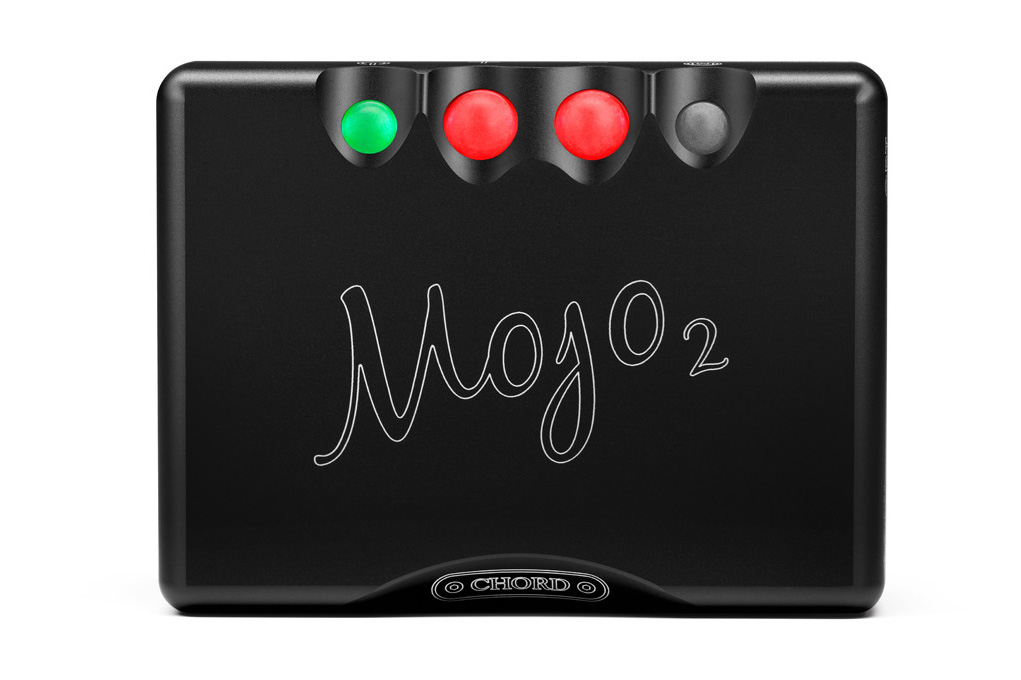
And here’s where it gets interesting (and by ‘interesting’, we mean ‘profoundly confusing’). The menu sphere cycles through a number of different functions: volume range (‘high’ or ‘low’), tone control (‘bass 20Hz adjustment’, ‘bass 125Hz adjustment’, ‘treble 20Hz adjustment’ and ‘treble 125Hz adjustment’). The menu sphere can also lock the controls to prevent unintentional operation.
In order to know the menu function that’s been selected, though, you’ll need to become familiar with eight different colours – the menu sphere illuminates in a shade that lets you know what’s what. The degree of tone adjustment you’ve selected, meanwhile, is indicated by the ‘plus’ and ‘minus’ buttons – and here there are nineteen different combinations of illumination you’ll need to understand. Even the power button gets involved – it lights up in one of 11 different colours, depending on the sample rate of the digital audio file it’s dealing with.
‘Intuitive’ is not a word we’ll be using here. Short of insisting Mojo 2 is only sold to colour-blind people, it’s difficult to know how Chord could have made this interface any more, um, ‘challenging’.
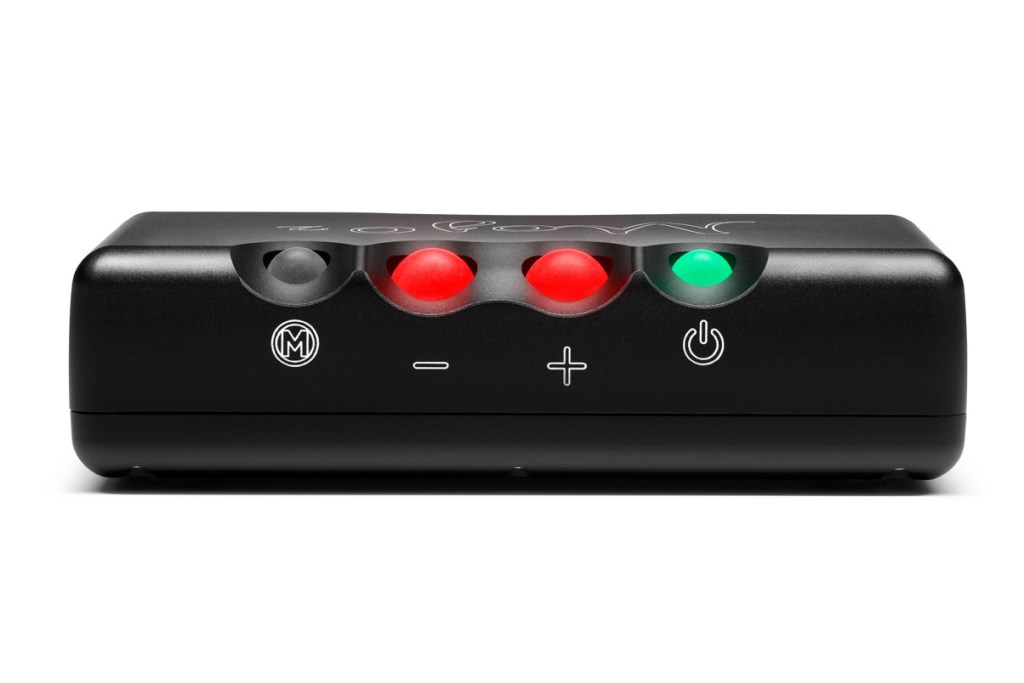
Performance: transformational
Ultimately, it’s well worth putting the hard yards in getting to grips with what all these colours mean. Because once it’s up and running – by which we mean attached via USB-C to a laptop at one end and via 3.5mm output to a pair of headphones at the other – the Mojo 2 is deeply impressive.
The sound it’s capable of delivering is simply light-years ahead of what your laptop can manage by itself. In every single respect – detail retrieval, rhythmic expression, high- and low-level dynamics, straightforward musicality, you name it – the Chord takes possession of the digital audio information on your computer and transforms it. It doesn’t matter if you want to understand your favourite songs on a molecular level or you simply want to be entertained – Mojo 2 will keep you engrossed for hour after hour.
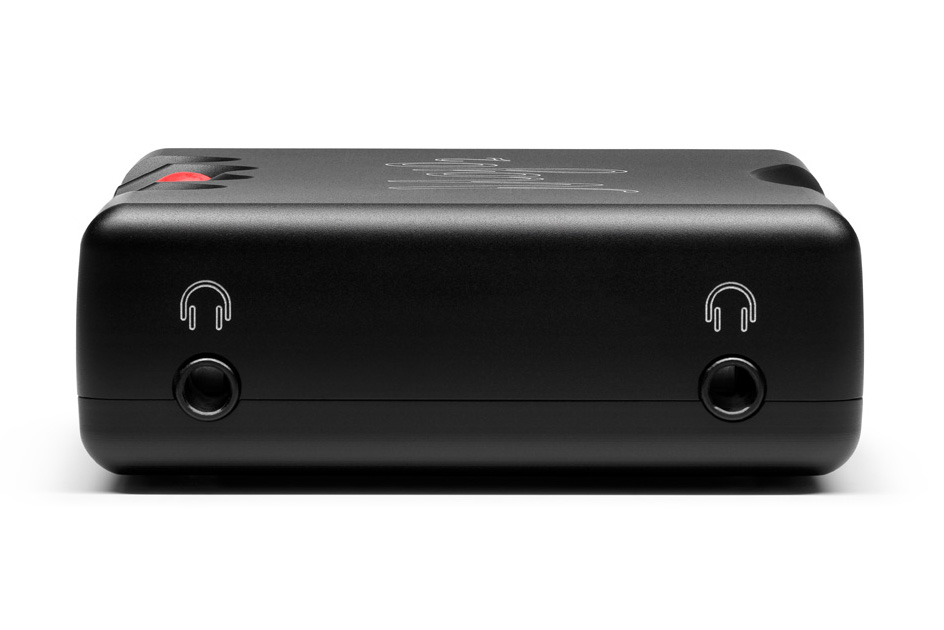
Listen to a Tidal Masters file of Curtis Mayfield’s We The People Who Are Darker Than Blue using Mojo 2 and it’ll tell you pretty much everything you need to know about what an accomplished and endlessly listenable device the Chord is. The minutiae of the recording – the tiny harmonic variations, the transient details attached to the attack and decay of individual notes, the tiny amount of bounce-back echo around the singer’s voice – are all identified and given as much prominence as the deep, precise and momentum-packed bass notes. As much prominence as the lavishly detailed, endlessly informative midrange, or as much as the crisply attacking, carefully controlled treble sounds.
We could go on – and at length – about Mojo 2’s ability to define a believable soundstage, or about its amazingly naturalistic way with tempos and rhythms, or its deep-breathing ability to drive even the trickiest headphones. But you have probably got the message by now: the Chord Mojo 2 is an extraordinarily accomplished little product, and one you absolutely need to hear if you want to turn your computer into an audiophile-grade source of music.
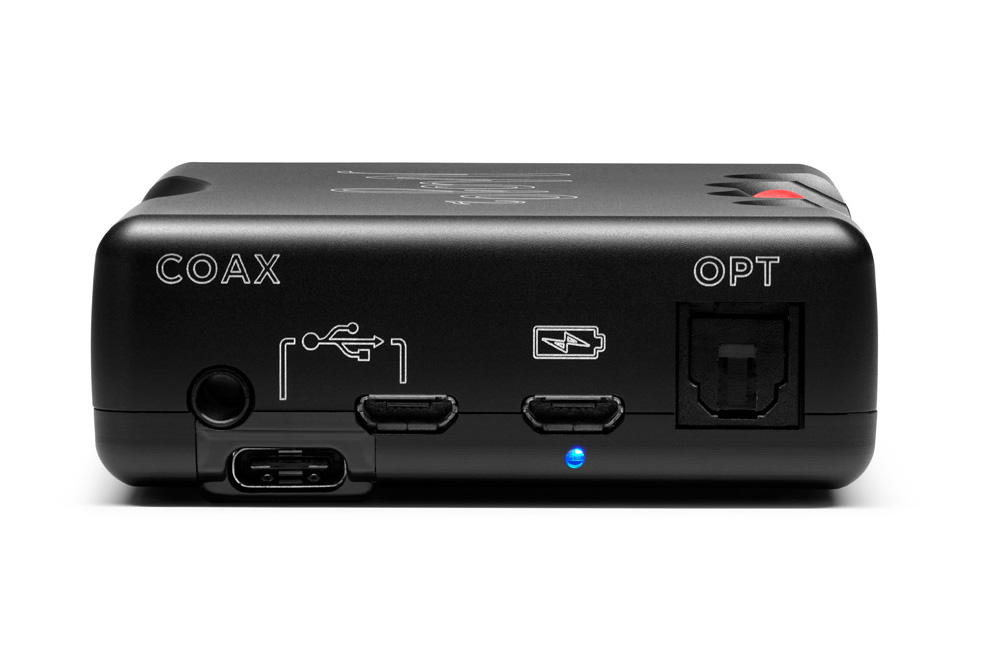
Verdict
Eventually, the headache you’ve been given by the Chord’s control interface will fade, and you’ll be left with a DAC and headphone amp that can make more of a difference to your desktop audio experience than you might have thought possible.
Stuff Says…
Serious about your desktop sound? Good – so is Chord.
Good Stuff
Gloriously articulate, convincing sound
Robust build and reliably individual aesthetic
Good selection of digital inputs
Bad Stuff
Migraine-inducing control interface
A little bulky to be truly portable



